VAMOS Is the capital of the district, a preserved village with marvelous traditional houses, some of which have been restored and already operate as high standard tourist lodgings. The village offers a wide variety of services such as a district court, post office, bank, OTE (Greek Telecommunications Organization), police station and health centre. Unverified historical sources say that Saracen pirates must have first inhabited it in the 8th century A.D. A traditional stone road (kalderimi) still remains, and a walk in the old part of the village is of great interest. Vamos used to be the capital of the Sfakia prefecture during the second half of the 19th century. This is the reason why a number of state buildings such as barracks, headquarters and a school, built by the famous Sava Pasha (the governor of the prefecture), were found there. They were subsequently burnt down by the rebels in the War of Independence against the Turks in 1896. Vamos is an ideal starting point for hikes in the surrounding hills where one can enjoy their rich flora and fauna. Vamos hosts the only pine tree grove to be found in the surrounding area. It is adorned by the restored girls' school, which is now a communal guesthouse. Today, because of its year round activities it has become a village known for its rich heritage. To the southeast of the village in the Karydi area one can see the monastery of Agios Georgios. It belongs to Aghia Triada of Tzagarolon situated in Akrotiri. The ruins of the church's cells and the old oil-press with its wonderful domes remain standing to the present day.
GAVALOHORI Is a traditional village with lovely stone built houses. It was named after the royal family of Gavalades, who acquired it by casting lot (klnpos) when Crete was divided between the 12 Byzantine princes in 1182. Five hundred meters from the village one can see several of the renowned wells built during the time of Gavalades on a landscape of rare beauty. It is a must! In Gavalohori there is a lovely folklore museum and a women's co-op which has developed the fine art of handicrafts such as knitting, embroidery and lace-making.
KAINA is situated on the ancient Kaino, Kainos or Kanos where Vritomartis Dictynna is believed to have been born. It is a lovely village with several traditional stone built houses and a rare view of the Lephka Ori (the White Mountains).
EMPROSNEROS On the way to Sfakia, past Vrysses, one can see this picturesque village surrounded by a forest of oak trees and offering a panoramic view. At the edge of the village lies the tower of Alidakis. He is said to have been a fearsome janissary, killed and burnt in his own tower by the rebels of Sfakia, under the leadership of the famous Manoussaka in 1774. There are other beautiful villages in the same area, like Kastelos, Patema, Philaki, where there is also an impressive grave of the Minoan period with a long passage way and a square chamber built of huge stones and a pyramid shaped ceiling.
KEFALAS Situated to the northeast of Vamos, is a wonderful traditional village with a rich and obvious local architecture. It owes its name to the first residents there, called Kephalades, the leaders of the Byzantine settlers sent to Crete in 1182 by Alexios Komninos. It is worthwhile taking a swim in the deep waters next to the steep coast, northeast of the village.
VRISSES Is situated in the centre of the Vrisses valley on the way to Sfakia. It is a rather new village, developed after 1925 on two “hania” (inns) which were there to accommodate the merchants and travelers to and from Sfakia. Now it is an important traffic junction with beautiful natural surroundings, a lush green village due to the Vryssano River which flows through it. There is a bank, post office, OTE, municipal office, gas station and super market. On the way to Rethymnon, to the east of the village, there is an ancient bridge of the Greco-Roman times the so-called Elliniki Kamara (The Greek Arch).
ARMENI Is built on a verdant landscape, covered by huge plane trees whose roots provide springs that irrigate most of the district. It got its name from its first inhabitants, (961 A.D.) the Armenians, who served in Nikiforos Phokas army liberating Crete from the Arabs. The abundance of water irrigates the entire area that has been transformed into a huge orchard full of fruit bearing trees and flowers.
KOKKINO HORIO was once a small stock-breeding village. It is located at the northernmost end of the province of Apokoronas in Hania, in the shade of Drapanokefalas, perched on the grey rocks and the red soil of the cape of Drapano (the village owes its name to that red soil, as is commonly believed).
Southwesterly, it faces towards the White Mountains, Malaxa and the harbour of Souda, whereas northeasterly, it overlooks Akrotiri, the Sea of Crete and the Archipelagos, up to the dim shadow of Milos, still visible when there are no clouds on the horizon. The village’s original location on a hill near the small bay of Koutala (where some ruins have been preserved) was subject to Saracen and other piratical invasions. That is the reason why the few inhabitants of the time, the Tzompanakis family, who were the founders of the village, moved to its current location, which was safer and whence the village expanded.
Its picturesque location combined with its dry climate constitute the reason why the densely populated traditional village of 100 houses has been “encircled” by luxury pool villas over the past decade, which are mainly occupied by north Europeans, many of whom are permanent residents. Despite the region’s residential “development,” its environment is still interesting in many aspects, and that is why it has been identified as an area of special natural beauty and a “NATURA 2000” listed site. The Cultural Youth Association of the village tries to preserve its rare endemic fauna and flora, some species of which are exhibited at the Association’s premises. The historical cave of Petsi is one of the approximately 30 caves located in the area and recorded by the speleological society. Among them, the underwater Elephant’s Cave, where the bones of the small elephant anticus anticus were found in 2001. About 30 venetians cisterns, where the village used to quench its thirst, and the wells that were found in Ligenia are being renovated towards becoming a sight to be visited, together with the old natural walking pathways.
In 1964, the village was chosen for the shooting of a great portion of Mihalis Kakogiannis’s film “Zorba the Greek” because of its wild natural environment and also because of its inhabitants’ authentic traditional way of life. The small Folklore Museum that the Association has set up tries to scrape together the photographs and items, the memories and feelings, and the ways and customs of another time. In the 1980s and in the early 1990s, the period of the repatriation that followed the great emigration movements of the former decades, some youngsters returned to their homeland. A wave of renewal swept through the village, such as Andreas Tzompanakis’s blown glass factory.
The village’s strategic position was the reason why the conquerors chose it to set up their most important observation posts in Western Crete during WWII, as well as their machine gun nests whence they even hit the belfry of Saint Mary in Fre.
At the foot of mount Drapanokefalas near the small country church of Ai Giorgis [St George] lie their remains, together with the gallery that the villagers of the area had been forced to build for the conquerors’ ammunition. Some of the villagers took part in the National Resistance, among whom Giorgos Tzompanakis, the last of a group of antartes [communist rebels] that had been active in the Cretan mountains for 34 years.
During the Turkish Domination, the inhabitants participated in the hostilities against the Turks. In retaliation, the Turks carried out a raid on the area on 6 August 1821, forced 116 men, women and children out of the aforementioned cave of Petsi and exterminated them, while they tortured the priest and three armed youngsters to death on the square of Kalyves (see the memoirs of Kallinikos Kritovoulidis).
Kokkino Horio is thus worth visiting as a holiday alternative. The area has sufficient accommodation and plenty of restaurants.
Vasiliki Velesiotou, Chairwoman of “Aghios Georgios”, Association of the Inhabitants of Kokkino Horio, cell phone 6972482980
GEORGIOUPOLIS A community by the sea built at the mouth of a lovely river. It has become an excellent resort, all green and quiet, with narrow, beautiful alleys, shops with jewelry and artifacts, small hotels, apartments, taverns and coffee shops. The towering eucalyptus trees along the riverbanks and the golden sandy beach that extends from the mouth of the river and 10 km to the east and just 35 km away from Hania form an ideal place to vacation. There is a bank, medical center, police station here.
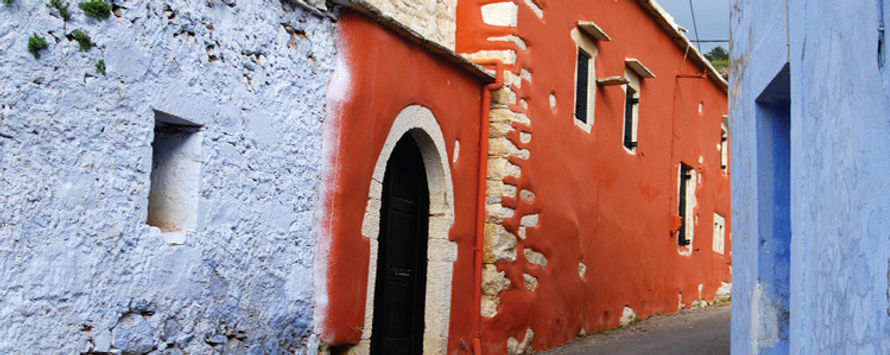
Apokoronas - Georgioupolis
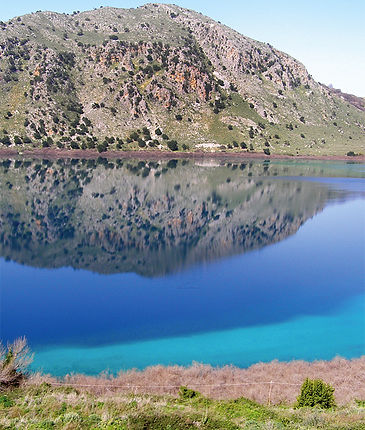
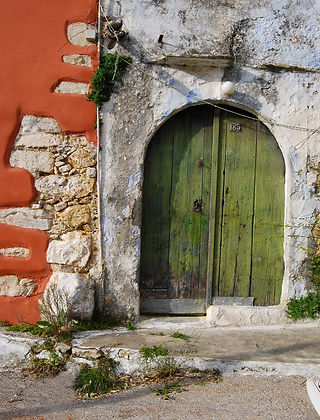
KOURNAS A semi-mountainous village with a lovely lake of the same name, the only one in Crete, surrounded by mountain masses constituting a landscape of unique beauty. The ancient name of the lake was Korissia Athena and it is said that there was once a sanctuary of the same name although there is no proof at present.
KALYVES A beautiful village by the sea in Souda Bay. The ancient city of Kissamos is supposed to have lain east of this village, near Aptera, which used to be a seaport. Now, there is only a small Venetian castle, the Castel Apricornoar Bicorno. The historian, P. Faure places the ancient city of Tanus between Kalyves and Almyris. According to the historian K. Dunakis, the name of Kalyves (Huts) is connected with the landing of Arabs, in 826 A.D. in the village area at Sarcinos place. The Arabs had landed there and built their huts and ever since this has been the name of the village. A small river crosses the area, built by its banks are many hotels, restaurants and coffee shops. You can find a bank, a post office, telephone service, general tourist office all class of hotels, rooms to let, restaurants, traditional taverns, and shops with souvenirs and traditional delights. The beach, extending for 300 m. just before the entrance to the village, has golden sand with green-blue waters. An ideal place for peaceful vacations by the sea, only 22 km away from Hania.
ALMYRIDA A small picturesque, settlement by the sea. Here you can see the ruins of an 11th century A.D. basilica with mosaics. Two small sandy beaches stretch to the east and west of the settlement and both are ideal for swimming, surfing and a peaceful stay by the sea. Picturesque fish-taverns serving fresh fish and seafood can by found by the bay 4.5 km from Kalyves. Nearby you will find small isolated, unknown, beaches, such as -- Koutalas which has lovely with sea-caves and Nerospilia that has 7 caves and fresh running water. There are also salt-marshes.
PLAKA A small settlement by the sea, 2 km after Almyrida, with a small bay, perfect for quiet, idyllic swimming. By the bay with a panoramic view of Souda Bay you will find plenty of hotels, apartments, rooms for rent and traditional taverns.
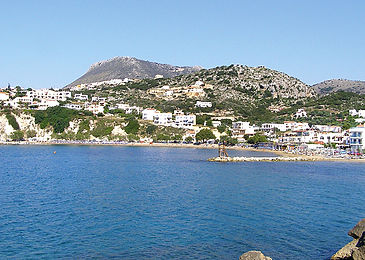


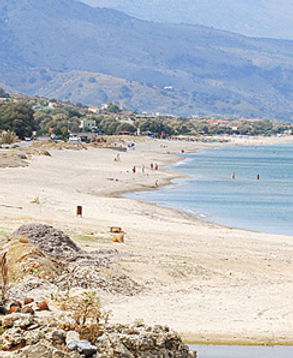

Almyrida, Apokoronas, Chania 73008, Crete, tel.+30 28250 32075, 28250 32284 Fax+302825032442 www.almyridabeach.com e-mail: info@almyridabeach.com Located on the picturesque beach of the coastal village of Almyrida, which stretches out over 15 km from the city of Chania, Almyrida Resort is waiting to fulfil all your wishes. You can escape your daily routine in a stylish luxury Boutique Hotel, if you choose to stay at Almyrida Residence. For relaxing holidays with the whole family

Almyrida, Apokoronas, Chania 73008, Crete, tel.+30 28250 32075, 28250 32284 Fax+302825032442 www.almyridabeach.com e-mail: info@almyridabeach.com Located on the picturesque beach of the coastal village of Almyrida, which stretches out over 15 km from the city of Chania, Almyrida Resort is waiting to fulfil all your wishes. You can escape your daily routine in a stylish luxury Boutique Hotel, if you choose to stay at Almyrida Residence. For relaxing holidays with the whole family

Hampatha, Apokoronas, Hania, cell phone +306945558956 www.holiday-rentals.co.uk E-mail: kourkoulios@yahoo.gr The ΚOURKOULIOS villa is built in perfect harmony with the traditional style and offers moments of relaxation ideal for your holidays. Made of stone and wood, the villa’s warm and hospitable environment, as well as its facilities guarantee a pleasant sojourn. The pool with its charming view and stone barbecue predispose one to a visit with friends or family all year roun

Hampatha, Apokoronas, Hania, cell phone +306945558956 www.holiday-rentals.co.uk E-mail: kourkoulios@yahoo.gr The ΚOURKOULIOS villa is built in perfect harmony with the traditional style and offers moments of relaxation ideal for your holidays. Made of stone and wood, the villa’s warm and hospitable environment, as well as its facilities guarantee a pleasant sojourn. The pool with its charming view and stone barbecue predispose one to a visit with friends or family all year roun
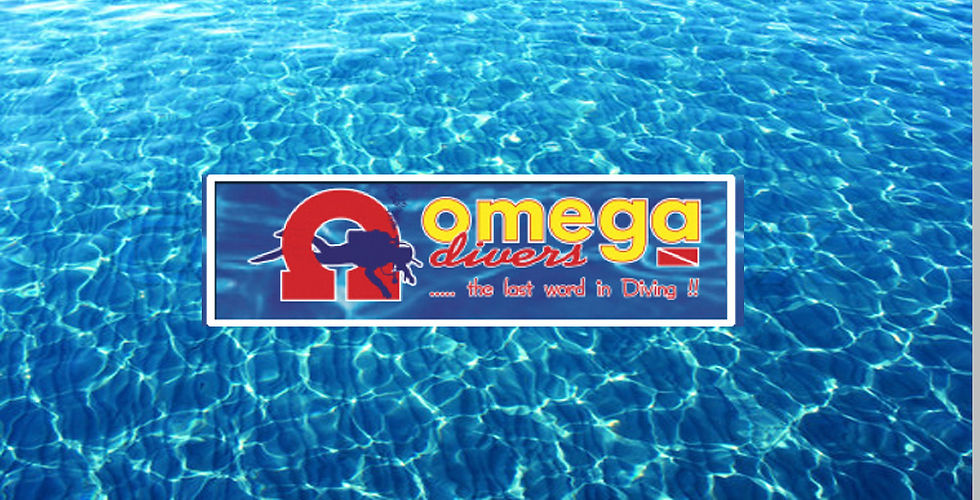
Almyrida tel./fax: +30 2825031412 www.omegadivers.com e-meil: info@omegadivers Omega Divers is a new PADI Center established 2011 offering recreational diving and courses for novice and experienced divers maintaining the highest po

Almyrida tel./fax: +30 2825031412 www.omegadivers.com e-meil: info@omegadivers Omega Divers is a new PADI Center established 2011 offering recreational diving and courses for novice and experienced divers maintaining the highest po
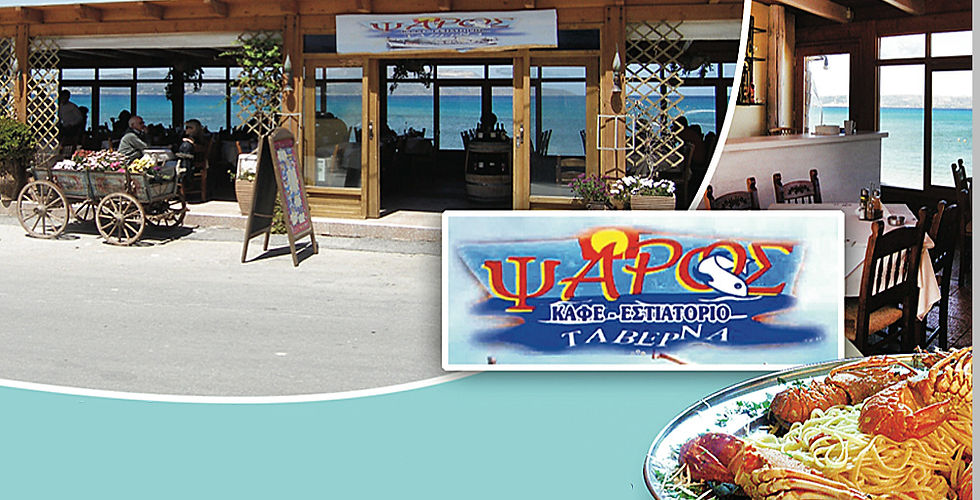
Almyrida Apokoronas tel. +3028250 32430, Cell phone: +30 6970681512, e-mail: psarosalmirida@hotmail.com Open all year round, from the morning. Towards the end of the picturesque beach of Almyrida is the 3rd generation Psaros Tavern that is famous for its fresh fish, exquisite lobster spaghetti and delicious well-cooked traditional dishes. Try our roasted lamb and enjoy your meal with our excellent wine, by the sea.

Almyrida Apokoronas tel. +3028250 32430, Cell phone: +30 6970681512, e-mail: psarosalmirida@hotmail.com Open all year round, from the morning. Towards the end of the picturesque beach of Almyrida is the 3rd generation Psaros Tavern that is famous for its fresh fish, exquisite lobster spaghetti and delicious well-cooked traditional dishes. Try our roasted lamb and enjoy your meal with our excellent wine, by the sea.
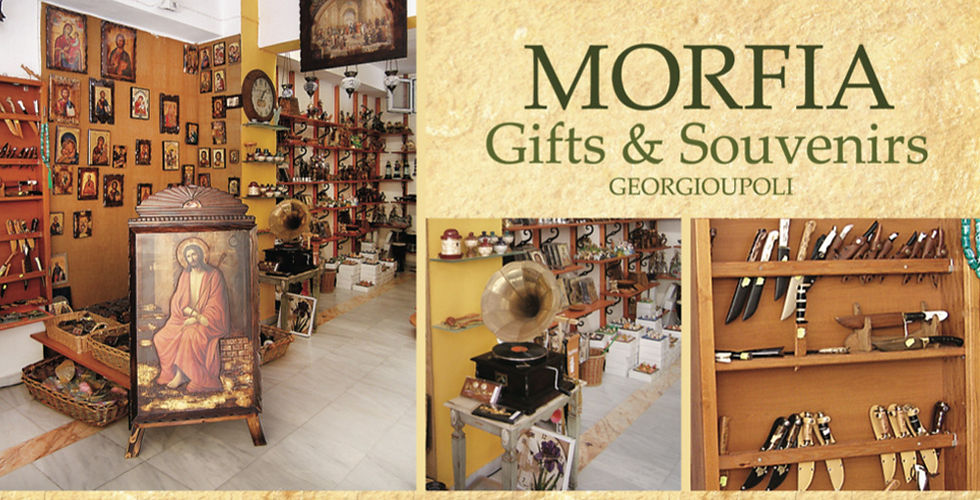
Georgioupolis Square, tel. +3028250 61395, On Georgioupolis Square, you will come across Morphias’s gift shop offering a wide variety of items and souvenirs to offer your loved ones. It is a picturesque shop, decorated with love and care, where you will find a lot of traditional Cretan items, icons, knives, bijoux and many other gifts.

Georgioupolis Square, tel. +3028250 61395, On Georgioupolis Square, you will come across Morphias’s gift shop offering a wide variety of items and souvenirs to offer your loved ones. It is a picturesque shop, decorated with love and care, where you will find a lot of traditional Cretan items, icons, knives, bijoux and many other gifts.
We Recoment
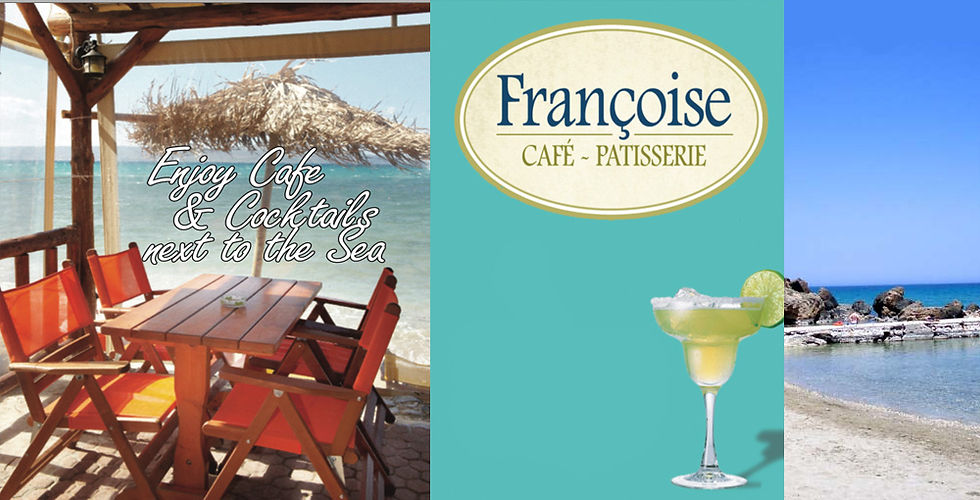
Almirida Chania tel: +30 28250-32591

Almirida Chania tel: +30 28250-32591
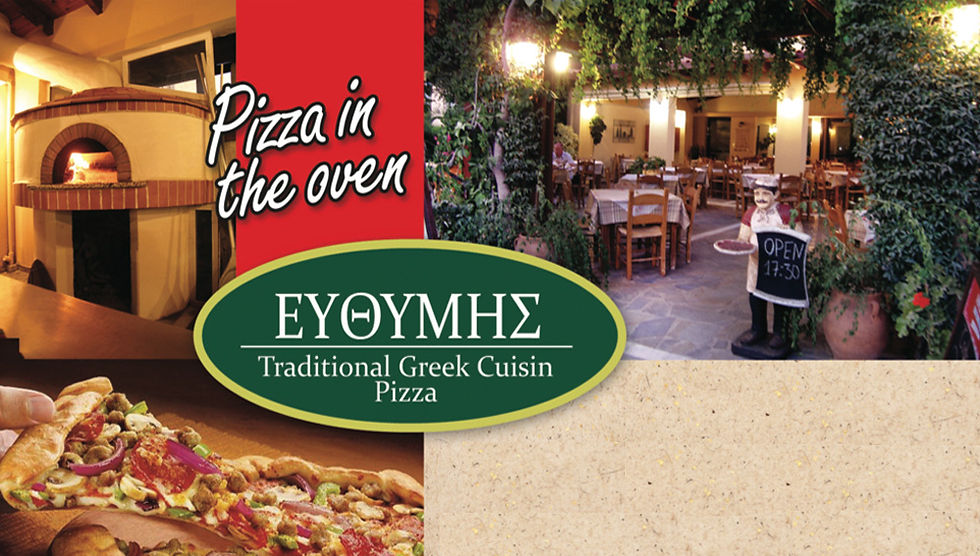
Georgioupolis, Chania, tel. +3028250 61886 Open from April until October. On your way to Georgioupolis, we recommend that you stop over at the Efthimis Tavern, where you can enjoy specialities of the traditional Cretan cuisine in a pleasant family environment, including meat broiled over charcoal, spaghettis, pizza baked in a wood-fired oven and excellent wine. All cooked with fresh and pure ingredients.

Georgioupolis, Chania, tel. +3028250 61886 Open from April until October. On your way to Georgioupolis, we recommend that you stop over at the Efthimis Tavern, where you can enjoy specialities of the traditional Cretan cuisine in a pleasant family environment, including meat broiled over charcoal, spaghettis, pizza baked in a wood-fired oven and excellent wine. All cooked with fresh and pure ingredients.
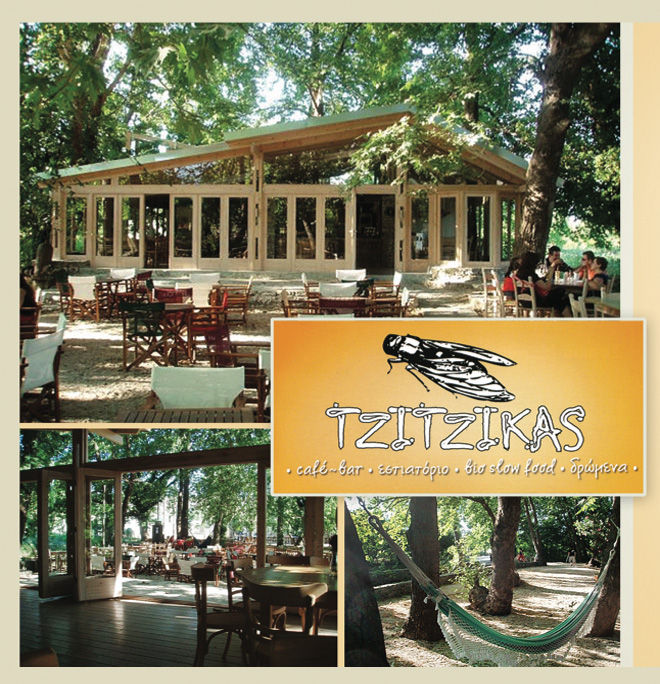
– Bio Slow Food Events Armenoi Apokoronou, Chania, tel.+30 28250-41144 E-mail: tzitzikasa@yahoo.gr Opening hours: Summer season: open daily, from 10:00 a.m. onwards Winter season: open on Saturdays, Sundays, and during the holidays, from 10:00 a.m. onwards. In 2006, under the giant sycamores by the fresh waters of Armenoi in Apokoronas, we created a place in complete harmony with the natural environment, which you can enjoy every minute of the day, in summer a

– Bio Slow Food Events Armenoi Apokoronou, Chania, tel.+30 28250-41144 E-mail: tzitzikasa@yahoo.gr Opening hours: Summer season: open daily, from 10:00 a.m. onwards Winter season: open on Saturdays, Sundays, and during the holidays, from 10:00 a.m. onwards. In 2006, under the giant sycamores by the fresh waters of Armenoi in Apokoronas, we created a place in complete harmony with the natural environment, which you can enjoy every minute of the day, in summer a
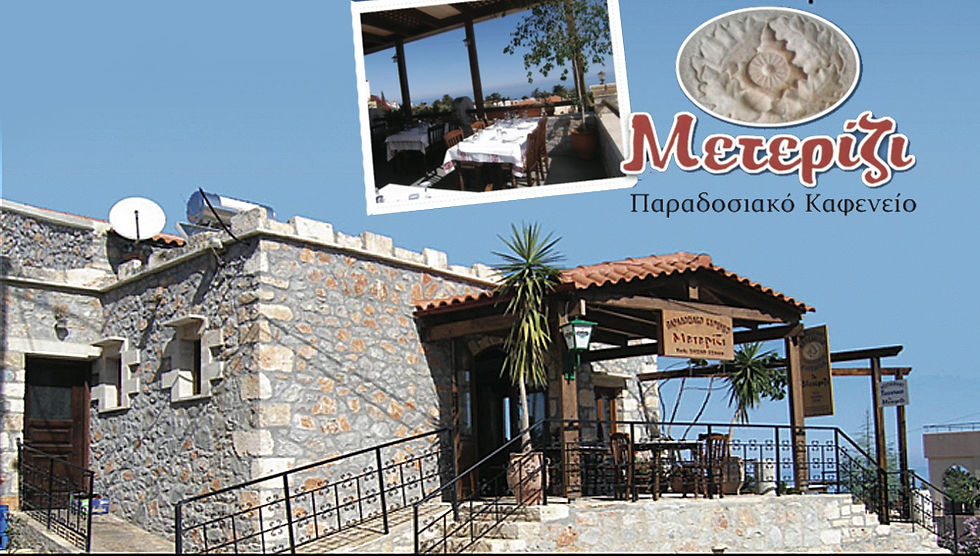
Traditional Cafe Kefalas, Apokoronas, Tel: +3028250-22666. Open all year round. E-mail: mligoxigakis@yahoo.gr Located in a village characterized by probably the richest tradition- al architecture in Apokoronas, METERIZI is the ideal cafe all the year round. It is a stone-built tav- ern serving exceptional meals, where you will have the opportu- nity to taste the local cuisine pre- pared with local products, very good wine and excellent raki.

Traditional Cafe Kefalas, Apokoronas, Tel: +3028250-22666. Open all year round. E-mail: mligoxigakis@yahoo.gr Located in a village characterized by probably the richest tradition- al architecture in Apokoronas, METERIZI is the ideal cafe all the year round. It is a stone-built tav- ern serving exceptional meals, where you will have the opportu- nity to taste the local cuisine pre- pared with local products, very good wine and excellent raki.
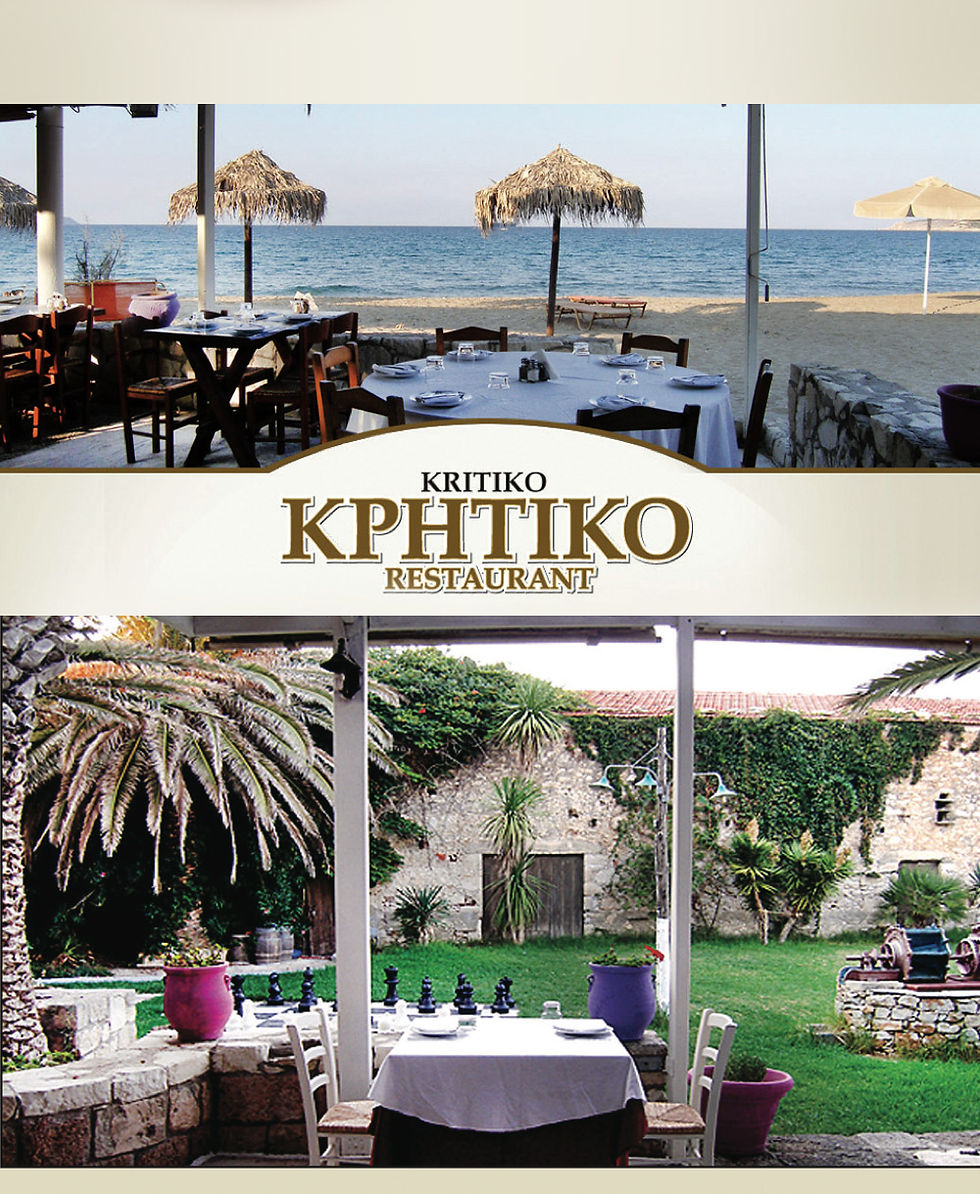
Kalyves, tel. +3028250 31096,e-mail: kritiko@ymail.com The restaurant’s ambiance is incredibly relaxing, by the sea and verdant. It serves dishes from the Mediterranean and Cretan cuisine that will impress even the most demanding palates. Fresh fish, dainty seafood, paella, traditional meals and fresh salads, for a lunch or romantic dinner accompanied by the sea breeze. This winter you will be able to taste these dishes inside the restaurant, where wood dominates a decoration that was carefully

Kalyves, tel. +3028250 31096,e-mail: kritiko@ymail.com The restaurant’s ambiance is incredibly relaxing, by the sea and verdant. It serves dishes from the Mediterranean and Cretan cuisine that will impress even the most demanding palates. Fresh fish, dainty seafood, paella, traditional meals and fresh salads, for a lunch or romantic dinner accompanied by the sea breeze. This winter you will be able to taste these dishes inside the restaurant, where wood dominates a decoration that was carefully
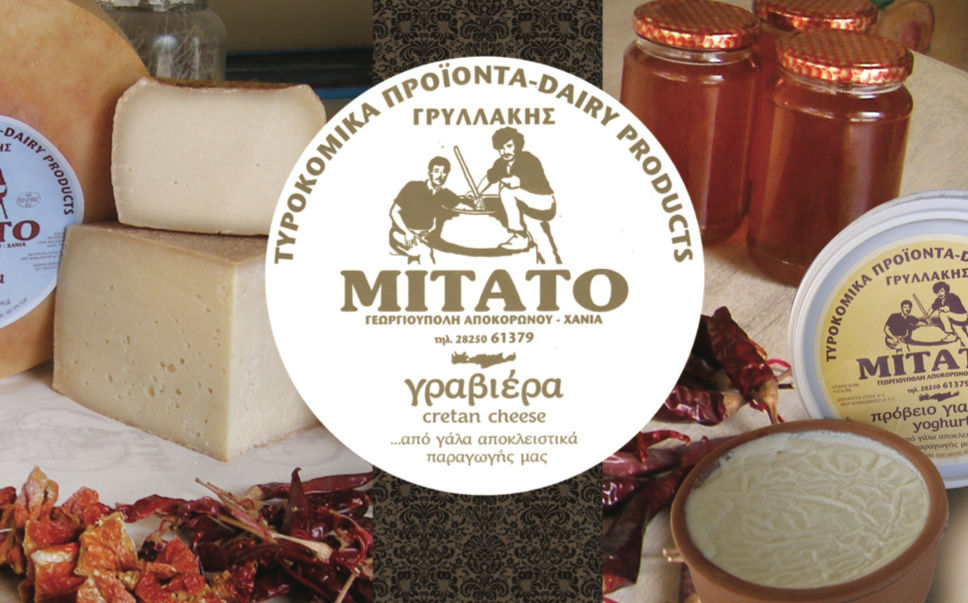
Georgioupolis, Apokoronas tel. +30 28250 61379, www.mitatodairy.gr Open all year round. Located in the centre of Georgioupolis, our shop sells select dairy produce like gruyere, myzithra (traditional, unpas- teurized fresh cheese), feta cheese, tyromalama (or malaka, fresh cheese made with pasteurized sheep and goat's milk), traditional high-quality yoghurt, all made with pure ingredients. Our production has preserved and tries to pop- ularize the traditional prep

Georgioupolis, Apokoronas tel. +30 28250 61379, www.mitatodairy.gr Open all year round. Located in the centre of Georgioupolis, our shop sells select dairy produce like gruyere, myzithra (traditional, unpas- teurized fresh cheese), feta cheese, tyromalama (or malaka, fresh cheese made with pasteurized sheep and goat's milk), traditional high-quality yoghurt, all made with pure ingredients. Our production has preserved and tries to pop- ularize the traditional prep
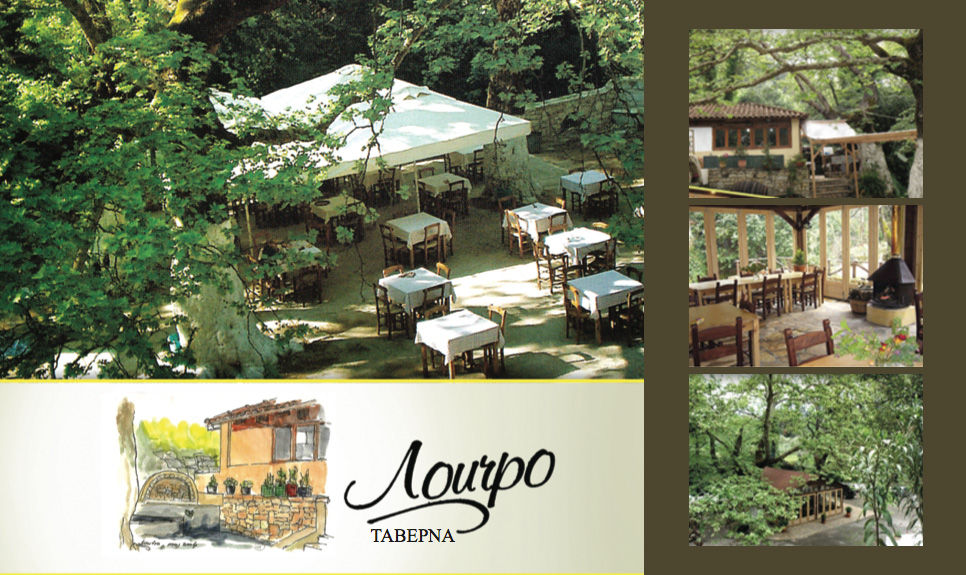
Fre-Apokoronas (old national road Fre-Vrises), tel: +302825071595. Open all day, all year. A very beautiful place under old trees, perfect for an excursion. The food is very tasty. This is one of the last Taverns in the region serving home cooked traditional dishes accompanies by an excellent house wine and self-made raki. The whole family is working here giving the place its friendly and happy atmosphere and the very good service.

Fre-Apokoronas (old national road Fre-Vrises), tel: +302825071595. Open all day, all year. A very beautiful place under old trees, perfect for an excursion. The food is very tasty. This is one of the last Taverns in the region serving home cooked traditional dishes accompanies by an excellent house wine and self-made raki. The whole family is working here giving the place its friendly and happy atmosphere and the very good service.

Agapinakis, Kournas, Apokoronas, tel: +30 28250-96278. Open all year round. Agapinakis’ tavern is certainly a heaven on earth for the connoisseurs of good food. Delicious finely chopped season salads, fresh fried potatoes, apaki, kokoretsi, sausages, lamb ribs, gamopilafo, etc, all made of local meat, and wine of their own production will definitely guarantee an enjoyable meal. Before you leave they treat you with fresh homemade custard-filled pastry and tsikoudia. A cool an

Agapinakis, Kournas, Apokoronas, tel: +30 28250-96278. Open all year round. Agapinakis’ tavern is certainly a heaven on earth for the connoisseurs of good food. Delicious finely chopped season salads, fresh fried potatoes, apaki, kokoretsi, sausages, lamb ribs, gamopilafo, etc, all made of local meat, and wine of their own production will definitely guarantee an enjoyable meal. Before you leave they treat you with fresh homemade custard-filled pastry and tsikoudia. A cool an

Fre-Apokoronas (old national road Fre-Vrises), tel: +302825071595. Open all day, all year. A very beautiful place under old trees, perfect for an excursion. The food is very tasty. This is one of the last Taverns in the region serving home cooked traditional dishes accompanies by an excellent house wine and self-made raki. The whole family is working here giving the place its friendly and happy atmosphere and the very good service.

Fre-Apokoronas (old national road Fre-Vrises), tel: +302825071595. Open all day, all year. A very beautiful place under old trees, perfect for an excursion. The food is very tasty. This is one of the last Taverns in the region serving home cooked traditional dishes accompanies by an excellent house wine and self-made raki. The whole family is working here giving the place its friendly and happy atmosphere and the very good service.
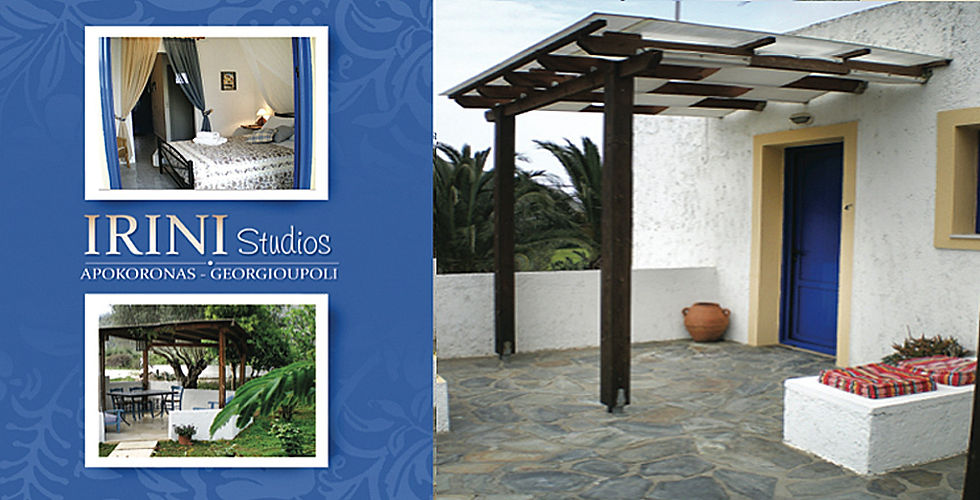
Georgioupolis, Chania, tel: +3028210 64813 mob: +306932369297 This small and simple property is set in lovely gar- dens, by the side of the property is a river with in- frequent fishes, birds and the famous protected turtle Kareta-Kareta.The studio is equipped with all necessary things so you can have a pleasant staying.The studio has two beds (one double - one single) with bathroom, kitchen, AC, TV and private balcony.Private Parking is also available.In our garden you will enjoy t

Georgioupolis, Chania, tel: +3028210 64813 mob: +306932369297 This small and simple property is set in lovely gar- dens, by the side of the property is a river with in- frequent fishes, birds and the famous protected turtle Kareta-Kareta.The studio is equipped with all necessary things so you can have a pleasant staying.The studio has two beds (one double - one single) with bathroom, kitchen, AC, TV and private balcony.Private Parking is also available.In our garden you will enjoy t
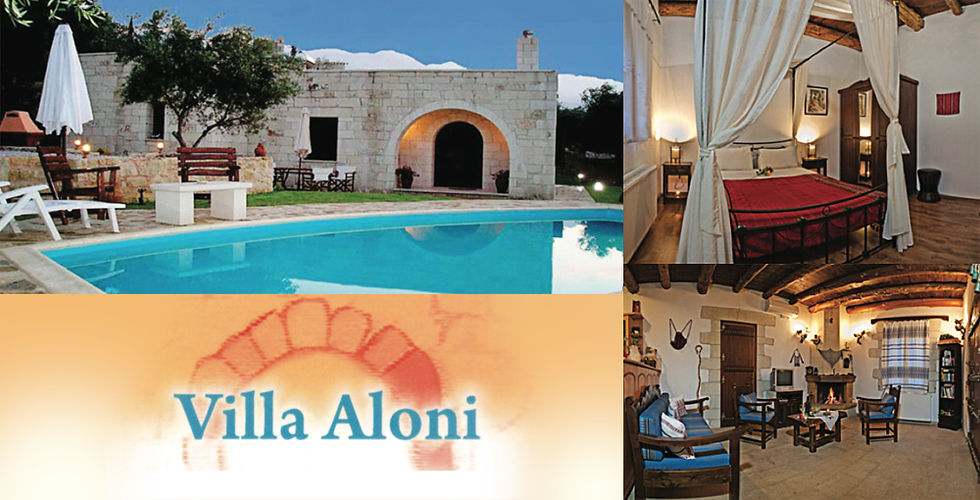
Maza, Apokoronas, Chania 73007, Crete Cell phone: +30 6932069626, www.villa-aloni.gr e-mail: info@villa-aloni.gr The stone Villa Aloni was built with love and attention to every detail. You can enjoy your holidays there all year round, with your friends, family or companion. Enjoy the sun, the sea and the hospitality of Crete. Aloni owes its name to the round stone area where the threshing used to take place and where the fruit used to be spread and dried. The stone Villa Aloni’s ar

Maza, Apokoronas, Chania 73007, Crete Cell phone: +30 6932069626, www.villa-aloni.gr e-mail: info@villa-aloni.gr The stone Villa Aloni was built with love and attention to every detail. You can enjoy your holidays there all year round, with your friends, family or companion. Enjoy the sun, the sea and the hospitality of Crete. Aloni owes its name to the round stone area where the threshing used to take place and where the fruit used to be spread and dried. The stone Villa Aloni’s ar



